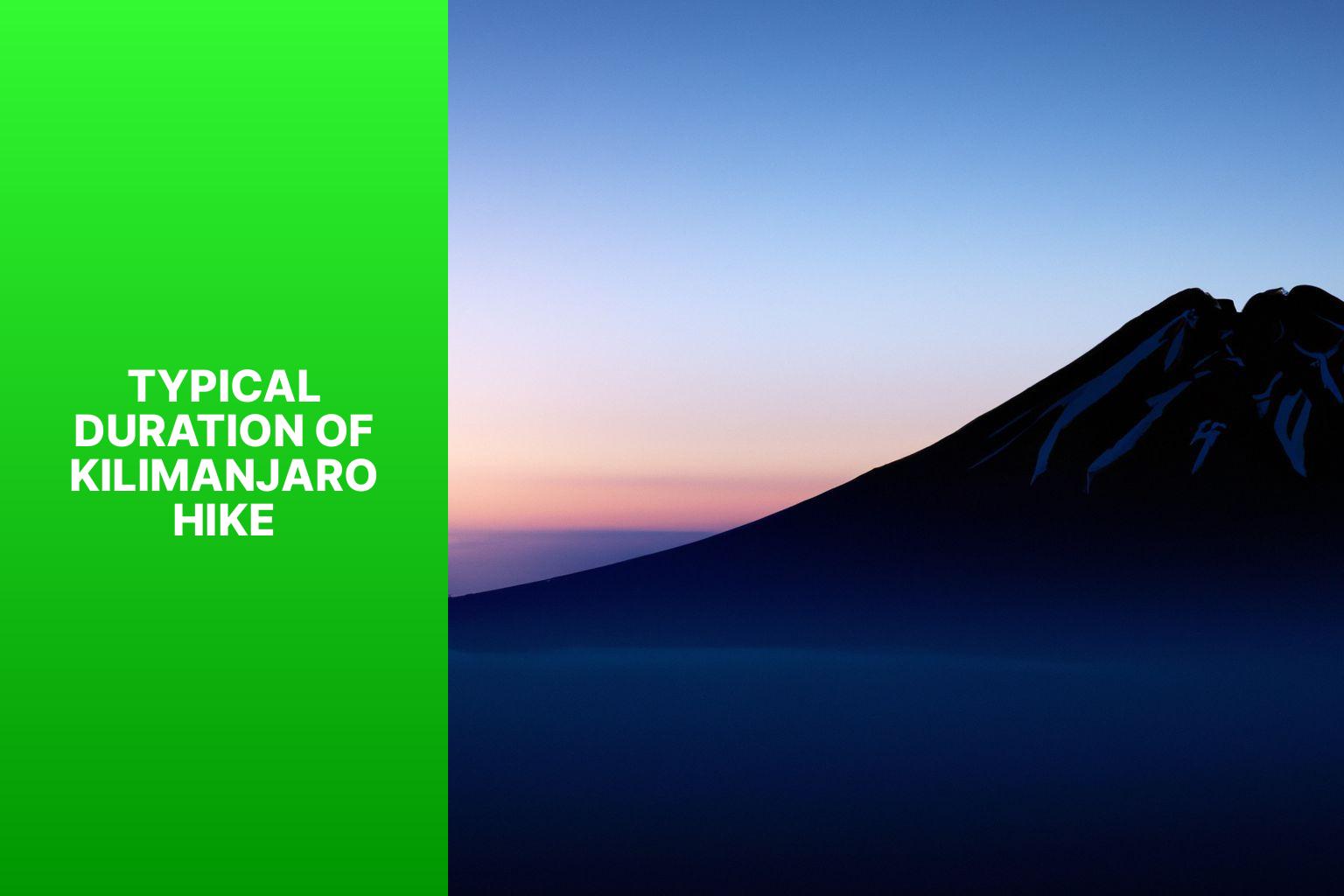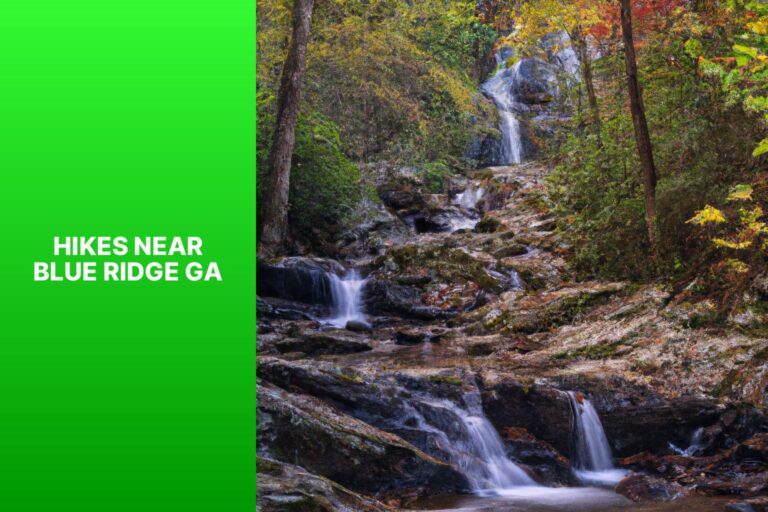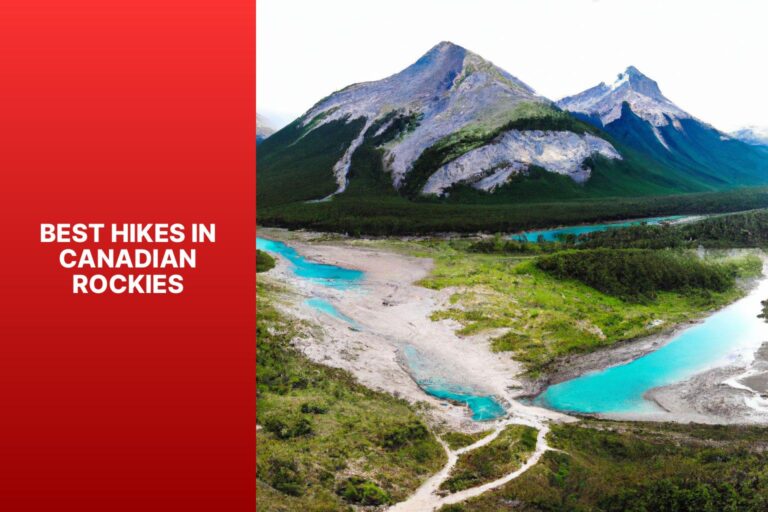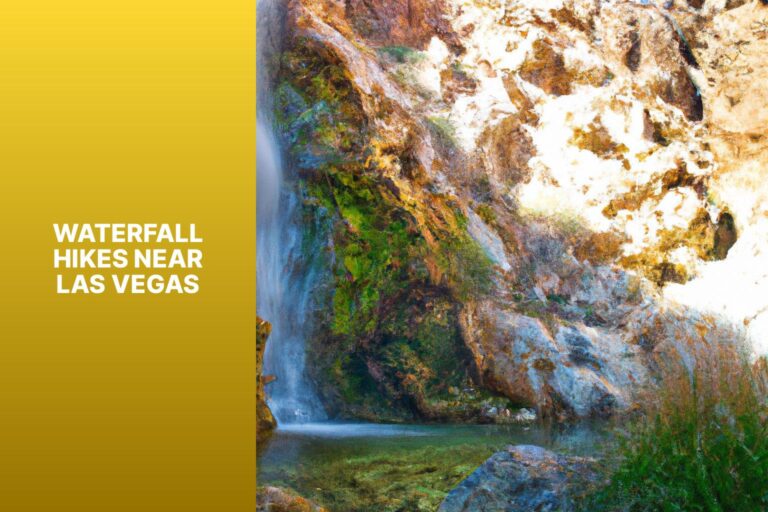How Long to Hike Kilimanjaro
Hiking Mount Kilimanjaro, the highest peak in Africa, is a challenging and rewarding adventure. The duration of a Kilimanjaro hike can vary depending on several factors. Understanding these factors is crucial for planning a successful climb. Here are the main factors that affect the duration of a Kilimanjaro hike:
1. Route Selection: The chosen route significantly impacts the trek duration. Each route varies in distance, difficulty, and number of days required for ascent and descent.
2. Acclimatization: Proper acclimatization is essential to prevent altitude sickness. All routes include acclimatization days to allow the body to adjust to the increasing altitude gradually.
3. Fitness Level: Your fitness level plays a significant role in determining the pace and endurance during the hike. Being physically prepared can reduce trekking time.
4. Group Size: The size of your hiking group can affect the pace and logistics of the climb. Larger groups may require more time for coordination and slower ascent rates.
5. Weather Conditions: Unfavorable weather conditions, such as heavy rainfall or snow, can affect the trail’s condition and slow down progress.
Different Kilimanjaro routes have varying durations. Some typical durations for popular routes include:
1. Marangu Route: This is the shortest and least difficult route, typically completed in 5-6 days.
2. Machame Route: Known for its scenic beauty, this route takes around 6-7 days for most hikers. Make sure to check the estimated time for hiking 11 miles before planning your trip.
3. Lemosho Route: Offering stunning landscapes, the Lemosho Route usually takes approximately 7-8 days.
4. Rongai Route: This route is less crowded and takes approximately 6-7 days to complete.
5. Northern Circuit Route: The longest route known for its excellent acclimatization profile, it generally takes 8-9 days.
To prepare for a Kilimanjaro hike, consider the following tips:
1. Physical Training: Engage in regular cardiovascular and strength exercises to improve endurance and muscle strength.
2. Gear and Equipment: Invest in proper hiking gear and equipment suitable for various weather conditions and terrains.
3. Mental Preparation: Develop a positive mindset, mental resilience, and determination to overcome challenges during the climb.
4. Hiring Local Guides and Porters: Hiring experienced guides and porters not only ensures safety but also contributes to the local economy.
5. Understanding the Altitude Effect: Educate yourself about the potential altitude-related symptoms and know how to mitigate them.
By considering these factors and following these tips, you can plan and prepare for an unforgettable Kilimanjaro hiking experience.
Key takeaway:
- Route selection impacts hiking duration: The chosen route on Mount Kilimanjaro can significantly affect the duration of the hike.
- Acclimatization is crucial for a successful hike: Allowing time for acclimatization helps climbers adjust to the high altitude, reducing the risk of altitude sickness and ensuring a safer and more enjoyable journey.
- Fitness level and group size influence hike duration: One’s fitness level and the size of the hiking group can impact the pace and overall duration of the Kilimanjaro hike.
Factors Affecting the Duration of a Kilimanjaro Hike
When planning a hike up Kilimanjaro, there are several factors that can impact the duration of your journey. From the route you choose, to your acclimatization process, fitness level, group size, and even the ever-changing weather conditions all these elements play a crucial role in determining the length of your trek. In this section, we will dive into each of these factors, offering insights and tips to help you gauge the time it might take to conquer Africa’s highest peak.
Route Selection
Route selection is of utmost importance when planning a hike on Mount Kilimanjaro. It plays a vital role in determining the level of difficulty, the picturesque scenery, and the overall experience of your trek. To assist you in making the right choice, here are a few steps to consider when selecting a route:
1. First and foremost, it is essential to conduct thorough research on the available routes on Mount Kilimanjaro. Popular options include Marangu, Machame, Lemosho, Rongai, and the Northern Circuit.
2. Take into account your own hiking experience and fitness level. Some routes may require prior experience and a higher level of fitness.
3. Another crucial factor to consider is the duration of each route. Depending on the specific route you choose, the hike can last anywhere between 5 to 9 days.
4. Consider the popularity and level of congestion on each route. Certain routes tend to attract larger numbers of hikers, while others offer a more secluded and intimate experience.
When selecting a route for your Kilimanjaro hike, it is important to assess your own abilities, goals, the level of challenge you seek, and the time available to you. By choosing a route that aligns with your fitness level and personal preferences, you are setting yourself up for an enjoyable and successful climb.
Without a doubt, proper route selection is paramount for a successful hike on Mount Kilimanjaro. Each route offers its own unique experiences, whether it’s the breathtaking beauty of the Machame route or the serene trails of the Rongai route. To maximize your chances of reaching the summit, select a route that suits your abilities and preferences.
Acclimatization
Acclimatization is crucial when hiking Mount Kilimanjaro, where altitudes can surpass 19,000 feet. Gradually adapting your body to high altitude is important to prevent altitude sickness and increase the likelihood of reaching the summit.
Begin acclimatizing by incorporating rest days into your itinerary. These days allow your body to adjust and recover. During rest days, take short hikes to higher altitudes and return to lower camps for sleep. This process, known as “climbing high and sleeping low,” helps acclimatize your body.
Hydration is key during acclimatization. Drink plenty of water to stay hydrated and aid in adjusting to altitude.
Ascend the mountain at a moderate pace to allow sufficient time for acclimatization. Monitor symptoms closely for signs of altitude sickness, such as headache, nausea, dizziness, or shortness of breath. If severe symptoms occur, descend to a lower altitude immediately.
Consider consulting with a healthcare professional before taking medications like acetazolamide to prevent altitude sickness.
Listen to your body throughout the hike and prioritize safety. If feeling unwell or experiencing severe symptoms, it’s better to descend rather than continue to higher altitudes.
Proper acclimatization increases the chances of a successful and enjoyable hike to the summit of Mount Kilimanjaro.
Fitness Level
Your fitness level is of utmost importance when it comes to hiking Mount Kilimanjaro. The success and enjoyment of your journey greatly depend on it. Take into account the following factors based on your fitness level:
- Endurance: Hiking Kilimanjaro demands long hours of walking, sometimes for consecutive days. To handle the physical exertion and altitude challenges, good cardiovascular endurance is crucial.
- Strength: The hike involves steep uphill climbs and descents, which can strain your muscles. To navigate the challenging terrain more easily, it is helpful to build strength in your legs, core, and upper body.
- Balance and Stability: The trails on Kilimanjaro can be uneven and rocky. Maintaining control and preventing injuries require good balance and stability. Incorporate exercises that enhance these aspects into your fitness routine.
- Flexibility: Preventing muscle strains and sprains while hiking requires flexibility. Improve your flexibility and reduce the risk of injury through stretching exercises like yoga or dynamic warm-ups.
- Altitude Fitness: Climbing Kilimanjaro presents the challenge of altitude sickness. Good overall physical fitness aids your body in adapting to the decreased oxygen levels at higher elevations.
Remember to adequately prepare for your Kilimanjaro hike. Consult with a medical professional and consider collaborating with a qualified hiking guide or trainer who can assess your fitness level and create a tailored training plan. Regular cardio exercises, strength training, hikes at increasing altitudes, and practicing walking with a backpack are all beneficial in preparing your body for the challenges of hiking Mount Kilimanjaro.
Group Size
When hiking Mount Kilimanjaro, group size significantly impacts the experience and duration of the hike. The table below shows how group size affects the hike duration:
Note that the mentioned duration is a general guideline and can vary based on factors like the chosen route, acclimatization, fitness level, and weather conditions. Maintaining a manageable group size enhances the hiking experience on Mount Kilimanjaro, making it smoother and more efficient.
Weather Conditions
When hiking Mount Kilimanjaro, weather conditions are essential for both success and safety. It is important to consider various factors such as temperature, precipitation, winds, cloud cover, and altitude-related weather changes.
Temperature plays a significant role on the mountain, with variations based on altitude. Lower slopes experience temperatures ranging from 70 F (21 C) during the day to below freezing at night. As you ascend, the temperatures drop significantly, and the summit can reach as low as -20 F (-29 C).
Precipitation on Mount Kilimanjaro follows its own weather system. The base is covered by rainforests, leading to rain and high levels of precipitation. At the summit, one can expect snow and ice. It is crucial to be prepared for rain, particularly during the rainy seasons from April to May and November to December.
Higher elevations on the mountain are prone to strong winds, especially on exposed ridges and summits. These winds can make hiking more challenging and increase the risk of hypothermia. Hence, proper gear that provides windchill protection is essential.
Cloud cover is another factor that can affect visibility and navigation, especially on higher slopes. It is recommended to check the weather forecast before your hike and plan accordingly to avoid foggy or cloudy conditions.
As you climb higher on Mount Kilimanjaro, weather conditions become more extreme due to altitude. The decreased air pressure results in lower oxygen levels, increasing the risk of altitude sickness.
To ensure a safe and enjoyable hiking experience, it is crucial to check the weather forecast before your Kilimanjaro hike and be prepared for changing conditions. Make sure to have proper clothing, equipment, and knowledge of weather patterns.
Typical Duration of Kilimanjaro Hike

Photo Credits: Jasonexplorer.Com by Lawrence Walker
Embark on a thrilling adventure up the majestic Mount Kilimanjaro as we uncover the typical durations of different hiking routes. From the scenic Marangu Route to the challenging Machame Route, each sub-section offers a unique experience for avid trekkers. Get ready to immerse yourself in the captivating landscapes and conquer the heights of Kilimanjaro as we delve into the various routes that await your exploration. Lace up your boots and let’s discover the awe-inspiring journey that lies ahead!
Marangu Route
The Marangu Route is a popular hiking route on Mount Kilimanjaro, known as the “Coca-Cola” route. It offers accommodations in huts throughout the trek, providing a comfortable experience. The trek takes around 5-6 days, depending on the hiker’s pace and acclimatization.
The Marangu Route starts at Marangu Gate on the southeastern side of Mount Kilimanjaro. Hikers pass through rainforests, moorlands, and alpine deserts. The final section is a steep climb to Uhuru Peak, the highest point of the mountain.
One advantage of the Marangu Route is that hikers can descend using the same route, which is less strenuous. Reaching the summit is less likely on this route due to the shorter acclimatization period.
Machame Route
The Machame Route is a popular hiking route on Mount Kilimanjaro. It is known for its scenic beauty and offers a challenging and fulfilling experience.
The route starts at Machame Gate and takes 6-7 days to complete, depending on the hikers’ pace and acclimatization. It is longer than the Marangu Route, which typically takes 5-6 days.
Hiking the Machame Route requires good fitness and stamina. The terrain includes steep climbs, rocky paths, and sections of scrambling. Hikers will encounter different climate zones, from dense rainforest to alpine desert, and eventually reach the summit at Uhuru Peak.
One advantage of the Machame Route is better acclimatization opportunities compared to shorter routes. The gradual ascent helps hikers adjust to the altitude and reduces the risk of altitude sickness. It is important to take adequate rest breaks and maintain a slow and steady pace for a safe and successful hike.
During the hike, hikers camp in designated sites along the route. It is essential to have proper camping and hiking gear, as well as enough food and water. Hiring an experienced guide and porters is highly recommended for a smoother and more enjoyable experience.
Lemosho Route
The Lemosho Route is a popular route for hiking Mount Kilimanjaro. When choosing this route, consider the following key aspects:
1. Scenic beauty: The Lemosho Route offers picturesque views of the Shira Plateau and the Western Breach. Hikers can enjoy diverse landscapes, including lush rainforests and alpine deserts.
2. Acclimatization: The Lemosho Route provides excellent acclimatization opportunities with a longer duration of 7-8 days. This gradual ascent helps hikers adjust to the altitude effectively, increasing their chances of reaching the summit successfully.
3. Less crowded: Compared to other routes like Marangu or Machame, the Lemosho Route is less crowded. This allows for a serene and peaceful hiking experience, connecting hikers with nature and offering a sense of solitude.
4. Success rate: The Lemosho Route has a higher success rate in reaching the summit. The longer duration and gradual ascent give hikers more time to adapt to the altitude, reducing the risk of altitude sickness and increasing their chances of reaching Uhuru Peak.
5. Wildlife encounters: The Lemosho Route passes through diverse ecological zones, providing opportunities to spot wildlife such as monkeys, elephants, and antelopes. This route allows for a unique experience of both the mountain’s natural beauty and its surrounding wildlife.
When planning your Kilimanjaro hike, consider the Lemosho Route if you prioritize scenic beauty, a higher success rate, and a less crowded experience. Remember to adequately prepare, including physical fitness training and acclimatization strategies, to ensure a safe and enjoyable journey to the summit. Lace up your boots and embark on an unforgettable adventure on the Lemosho Route!
Rongai Route
The Rongai Route is a popular route for Mount Kilimanjaro hiking. It offers scenic beauty and is less crowded than other routes. The route starts on the northeastern side, providing a unique landscape perspective. It is a good choice for a peaceful and serene hiking experience.
One advantage of the Rongai Route is its gradual ascent, which allows for better acclimatization to the altitude. This is important for a successful summit attempt and reduces the risk of altitude sickness. The route also offers stunning views of the surrounding landscapes, including the Kenyan plains and the Mawenzi volcano.
The typical duration for hiking the Rongai Route is 6 to 7 days, depending on the itinerary. This allows for acclimatization and adjustment to the changing altitude. It is recommended to acclimatize properly to increase the chances of reaching the summit successfully.
During the hike, it is important to be well-prepared and physically fit. The Rongai Route can be challenging, with steep and rocky terrain. It is advisable to train and build stamina beforehand to ensure a comfortable and enjoyable hike.
Northern Circuit Route
The Northern Circuit Route is a popular choice for hikers conquering Mount Kilimanjaro. Here are key points to consider when planning your hike on the
- Scenic Beauty: The Northern Circuit Route is renowned for its stunning scenery. Hiking through the Lemosho Glades provides breathtaking views of the Shira Plateau and the Western Breach of the mountain.
- Longer Duration: The Northern Circuit Route takes about 9 to 10 days to complete, making it the longest route to the summit. This duration allows for better acclimatization and increases the chances of a successful summit.
- Less Crowded: Compared to popular routes like Machame and Marangu, the Northern Circuit Route has fewer hikers. This provides a more peaceful and secluded experience with less congestion on the trails.
- High Success Rate: The Northern Circuit Route has one of the highest success rates for reaching the summit. The gradual ascent and ample time for acclimatization contribute to its impressive success rate.
- Varied Terrain: Hiking the Northern Circuit Route offers diverse landscapes and terrain, including lush rainforests and alpine deserts, showcasing Kilimanjaro’s unique ecosystems.
Now, let me share a true story. John, an experienced hiker, decided to take on the challenge of hiking the Northern Circuit Route. He was captivated by the stunning beauty of the route, traversing through awe-inspiring landscapes. The longer duration of the hike allowed John to acclimatize effectively and maintain his energy levels. The relatively low number of fellow hikers made him feel like he had the mountain all to himself. With each step, he felt a sense of accomplishment and a deep connection to nature. After days of perseverance and determination, John reached the summit of Kilimanjaro and experienced a feeling of triumph and fulfillment. The Northern Circuit Route had tested his physical endurance and nourished his soul. It was an experience he would cherish for a lifetime.
Tips to Prepare for a Kilimanjaro Hike
To prepare for a Kilimanjaro hike, follow these tips:
- Be physically fit: Prioritize being in good physical condition before attempting a Kilimanjaro hike. Regular cardio and strength training exercises will build endurance and strength.
- Acclimate yourself: Since Kilimanjaro is a high-altitude mountain, spend a few days in Tanzania or nearby areas at a lower altitude to help your body adjust to the altitude.
- Invest in proper gear: Get high-quality hiking gear, like hiking boots, weather-appropriate clothing, a backpack, sleeping bag, and hiking poles.
- Go on training hikes: Before the Kilimanjaro hike, go on several training hikes to improve stamina and get used to walking long distances with a backpack.
- Prepare mentally: Climbing Kilimanjaro can be mentally challenging, so stay positive and maintain a determined mindset throughout the hike.
- Stay hydrated and nourished: Drink enough water, bring electrolyte tablets for rehydration, and pack lightweight, high-energy snacks to sustain your energy levels during the hike.
- Prevent altitude sickness: Learn about the symptoms of altitude sickness and take necessary precautions, such as drinking plenty of water, pacing yourself, and following guide instructions.
- Get travel insurance: Obtain comprehensive travel insurance that covers emergency medical situations and trip cancellations.
- Book a guided tour: Consider booking a guided tour with experienced guides who have knowledge about the mountain and can ensure your safety throughout the hike.
Frequently Asked Questions
How long does it take to climb Mount Kilimanjaro?
It takes at least five days to climb Mount Kilimanjaro, but a minimum of six to eight days is recommended for a better chance of reaching the summit. Longer climbs of 10 or more days are also available for those with more time.
What are the best routes to climb Mount Kilimanjaro?
There are six main routes to climb Mount Kilimanjaro, each with its pros and cons. The Marangu Route is the most popular but suffers from overcrowding. The Machame Route is a popular alternative for cost-conscious travelers. The Shira, Lemosho, Rongai, and Northern Circuit routes are more scenic and quieter but are suited for those with deeper pockets. The Umbwe and Mweka routes are recommended only for experienced hikers.
What factors affect how long it takes to climb Kilimanjaro?
Factors that affect how long it takes to climb Kilimanjaro include altitude, seasons, and fitness level. Acclimatization is crucial to minimize the effects of altitude, and climbing over eight days increases the chances of summiting successfully. It is best to climb during dry seasons, and a reasonable level of fitness is required.
What is the success rate for reaching the summit of Mount Kilimanjaro?
The success rate of reaching the summit of Mount Kilimanjaro increases with longer climbs, with more than 85% of those who allocate eight days or longer reaching the top. The recommended duration for a Kilimanjaro climb is at least six to seven days. This allows for a safer climb with reduced risk of altitude-related illness and fatigue-related accidents.
What are the health risks associated with climbing Mount Kilimanjaro?
Health risks associated with climbing Mount Kilimanjaro include altitude sickness and fatigue-related accidents. The rapid gain in altitude can lead to altitude illness, including symptoms such as nausea, headaches, and difficulty breathing. It is important to prioritize acclimatization and climb at a slow and steady pace.
Do I need specialized equipment to climb Mount Kilimanjaro?
Climbing Mount Kilimanjaro does not require specialized mountaineering experience or equipment. A fair degree of fitness and determination is necessary. All climbs of Kilimanjaro must be arranged with a registered Tanzanian operator, who will provide guides, porters, camping gear, meals, and water.







